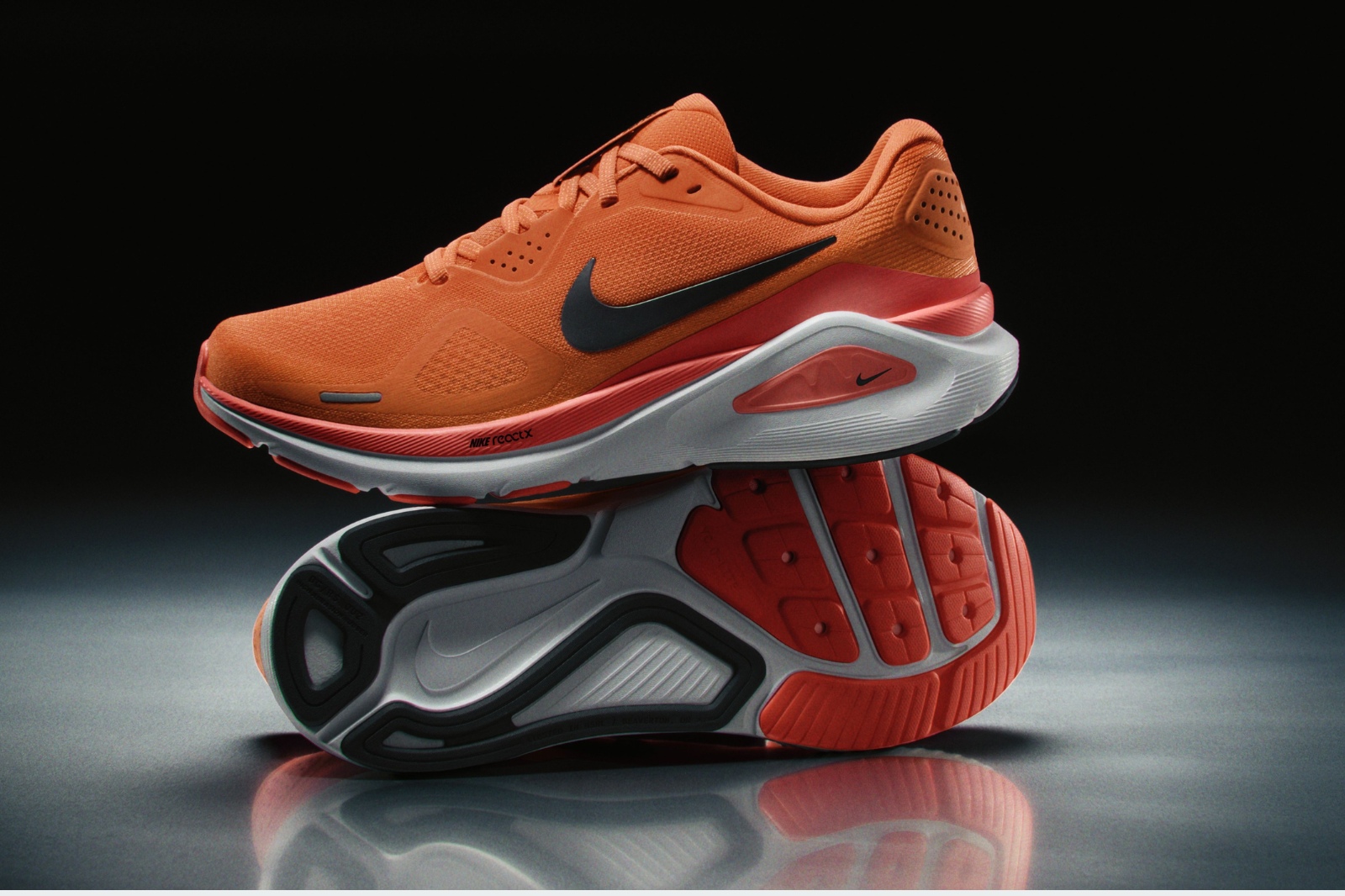
We independently review everything we recommend. When you buy through our links, we may earn a commission.
Nike Structure 26, the core stability model in the Structure silo
Updated ReactX midsole, no Zoom Air unit, updated forefoot rubber, Midfoot Support System on both lateral and medial sides
$145, July 3
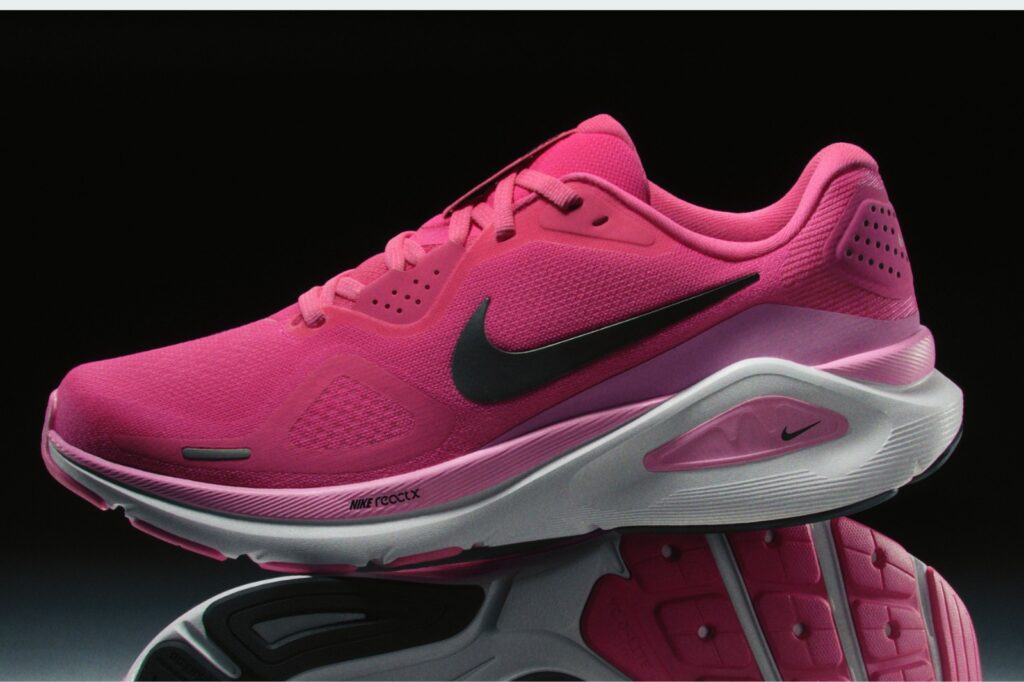
Nike Structure 26, women’s colorway
Stability isn’t sexy. That’s just science. And since we trust the science, we trust that we’ll never see a true stability shoe that both performs well and looks good.
Nike is trying to change that with the Structure 26, a revamped update to the shoe that’s provided support for runners everywhere for almost three decades. The shoe will release on July 3 for $145.
The Structure is a core part of the overhauled Nike franchise construct, which includes both the Vomero and Pegasus lines. All of them come with their own side pieces in Premium versions and Plus versions, for a total of nine shoes across the board (so far, we’ve only reviewed the Pegasus Plus and Pegasus Premium, though we’ve seen them all).
But today we’re talking about the Structure 26, the main model in the Structure silo, so let’s get into what’s changed and what that means.
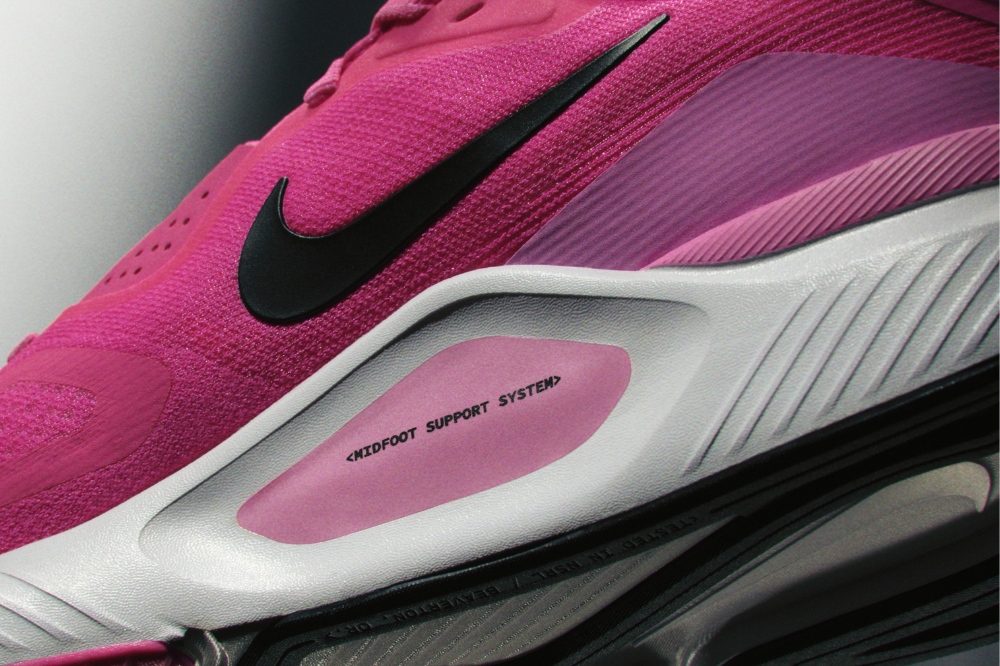
Stability comes from the Midfoot Support System
We’ll be honest – we haven’t reviewed this shoe since the Structure 22 back in 2018, and that was courtesy of Wide Foot Jarrett. Not saying his opinion doesn’t count, but maybe we’re saying we were passing him all the yawn-fest shoes we didn’t want.
Back then, the shoe used a dual density Phylon and Cushlon foam, weighed 11.4 ounces for a US M10 and retailed for $120. The previous version weighed 10.4 ounces.
From then on, the Structure seemed to limp along, somewhat of an afterthought for Nike. Like, “Here’s a bunch of V-Bucks, now go play Fortnite with your friends and leave us alone.” Some years it wasn’t updated, others it was. It’s taken 7 years to move it along four versions.
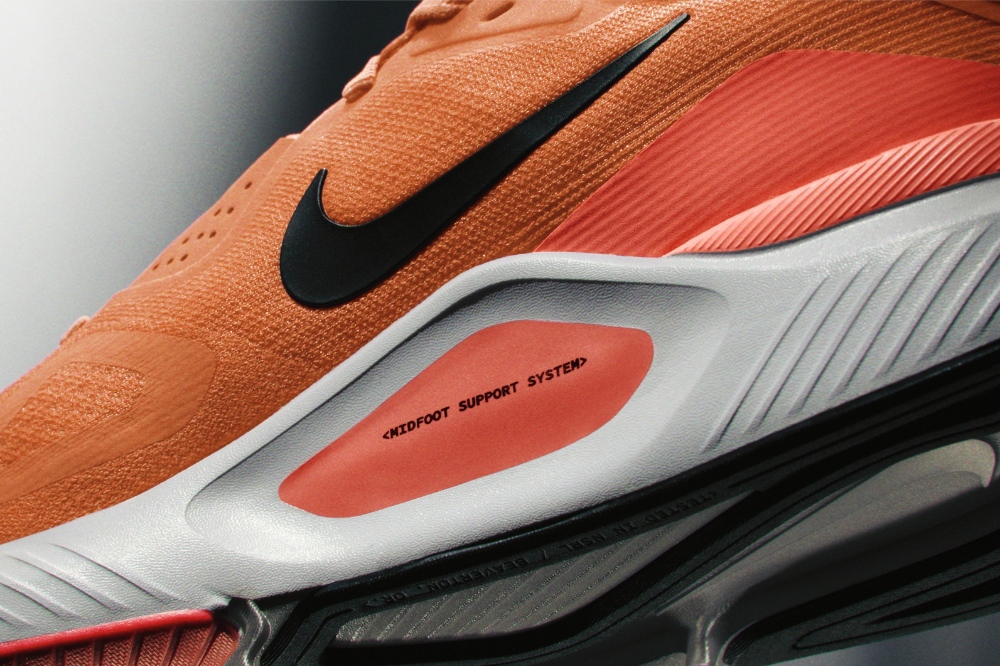
Midfoot support system on the medial side
In any case, we’re here. Starting with the midsole, the Structure 26 utilizes ReactX foam, the soft and bouncy foam found throughout the Nike running line, in models like the Pegasus 41 and the Vomero 18. In this version, the forefoot air bag has been removed to improve the heel to toe transition, and the entire thing is 13% more responsive according to Nike, a nebulous metric that sounds good but nobody really knows what it means.
Regarding support, Nike wraps the foot in the key support zones with its Midfoot Support System on both the rear heel area on the lateral side and the midfoot area on the medial side. You’re gonna need that support because the stack height on this shoe is 38 mm in the heel and 28 mm in the forefoot (10 mm drop), its highest stack height to date. The upper features a new engineered mesh with strategic overlays. Moving to the outsole, the forefoot gets a new blown rubber for better grip while the heel gets a high abrasion rubber for increased durability.
All of that comes together for a package that weighs 11.3 ounces (321 g) for a US M10. Not exactly the lightest shoe out there, but also not totally unreasonable for a traditional stability shoe.
Shop Nike Structure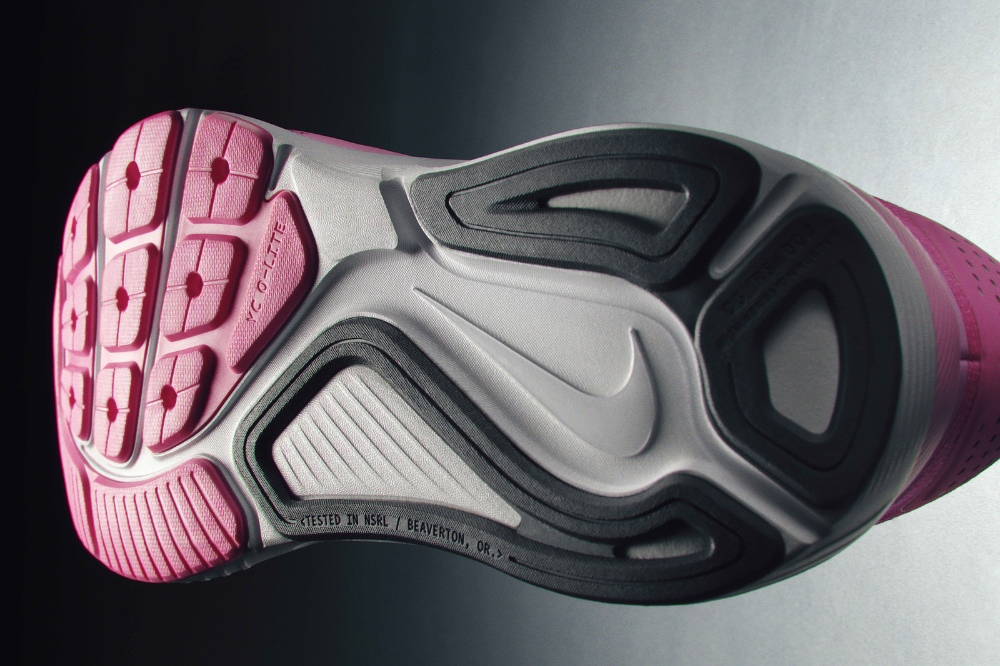
Outsole of the Nike Structure 26
Over the past half decade, most brands have gradually moved into “light stability” for their support shoes (for example, the Asics Gel-Kayano and the endless GTS versions of Brooks models). Not Nike. While it is a bit simplified, they’re really leaning into the support with the very obvious structural elements of the Midfoot Support System. Is this a good thing? I guess we’ll see. Certainly, Nike feels that there’s a contingency of runners that need that traditional support.
It’s nice to see the shoe move into the present with the ReactX foam, which has been around for the past two years. It’s worked well in some shoes (Vomero 18 with a top layer of ZoomX), though it’s been a bit ho-hum in others (Pegasus 41). I think I was one of the few reviewers who actually enjoyed the ride of the InfinityRN 4, despite its monstrous weight.
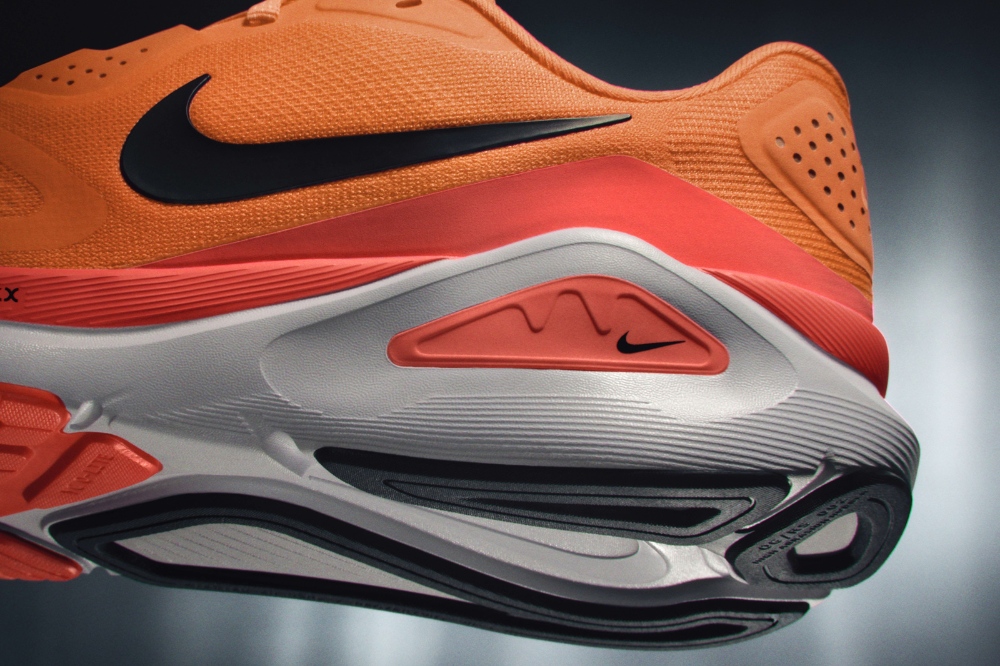
Heel support on the lateral side
Weight seems to be the least of Nike’s concerns these days. They’re either space station weightless like the Nike Streakfly, or cinder block dense like the Pegasus Premium. There’s virtually nothing in the 8-ounce range outside of the Zoom Fly 6, which may be the best Nike running shoe right now.
As it stands, Nike in general seems to be trending in the heavier direction, which is partly a byproduct of “lifestyling” the whole family. Especially in the Premium versions of all three siloes, thanks to the big-ass visible Zoom Air units that accompany each midsole. Time will tell if the gamble pays off.
In the case of the Structure, it’s not overbearingly heavy by any means, it’s just interesting to see a shoe an ounce heavier than it was 8 years ago. That said, if you’re getting a really nice ride that’s bouncy but somehow stable, then it’s worth the trade-off.
It’s always been interesting that the Structure is quite often the go-to trainer for Nike elites. Galen Rupp was known to prefer the Structure, and Sinclaire Johnson and Cole Hocker have both been training in this version.
Most likely, you and I are not Nike elites. Will it work us? Will the Structure silo work for everyone else? I guess we’ll find out.
Last thing: Of all the brands out there, Nike has been one of the best at keeping prices down while everything else shoots up. While they are raising prices on some models on account of the tariffs, others are staying the same. At $145, the Structure 26 remains one of the best buys for a stability shoe, so that’s something.
You can pick up the Nike Structure 26 on July 3 at nike.com by using the shop links below.
Shop Nike Structure
Have something to say? Leave a Comment

Robbe is the senior editor of Believe in the Run. He loves going on weird routes through Baltimore, finding trash on the ground, and running with the Faster Bastards. At home in the city, but country at heart. Loves his two boys more than anything. Has the weakest ankles in the game.
More from Robbe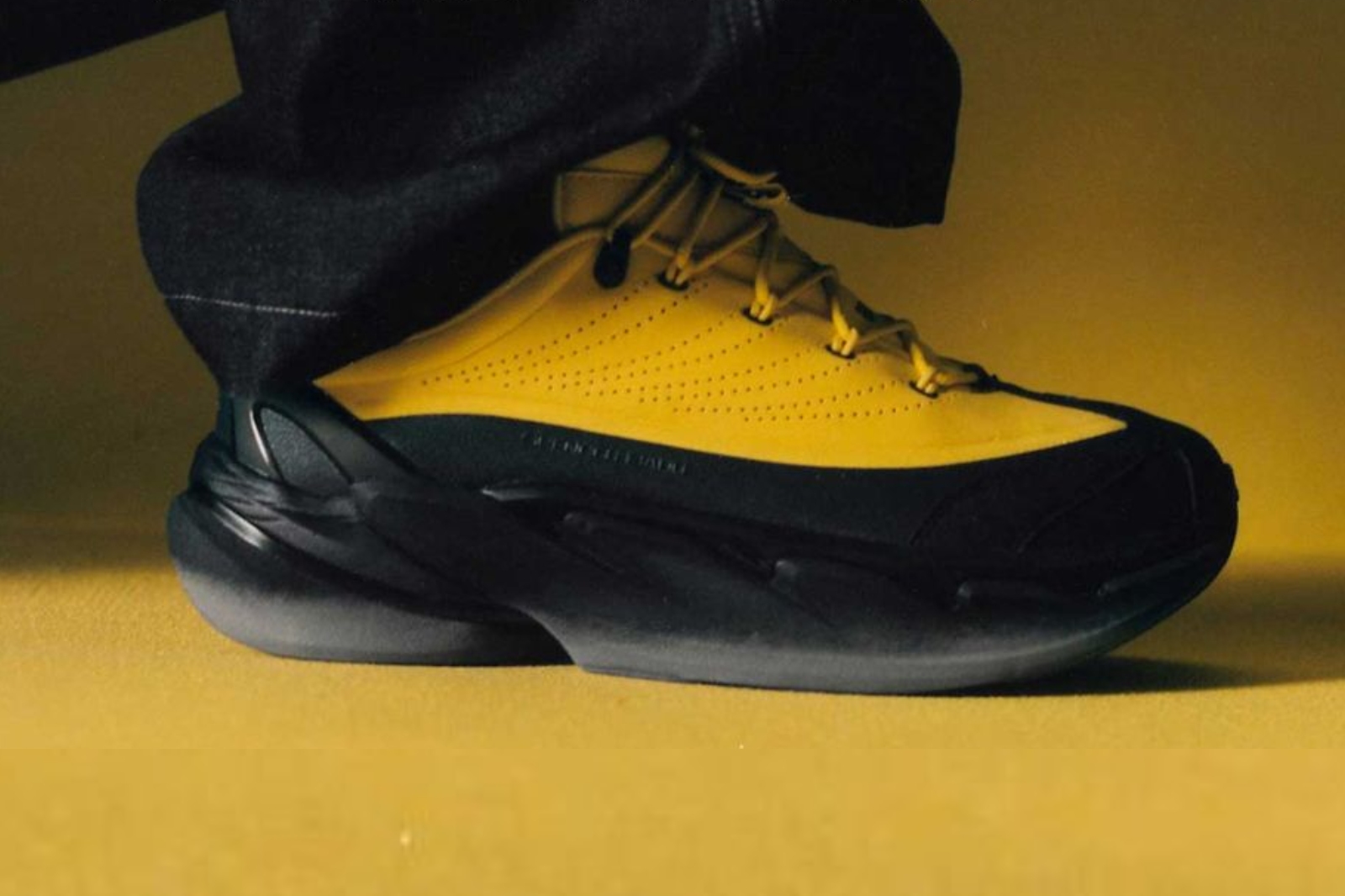

It’s actually been more than three decades, as the first version came out in 1991. The first 5 or 6, as well as the last few versions (the latter of which you noted) only came out every other year. As someone who’s run in every version, what I’m hearing is very disappointing. The Structure has always had a zoom air unit, had balanced (and not just heavily medial) stability, and had good pace versatility (despite the sometimes heavyish weight). With the softer Cushlon 3.0, higher stack, and relatively dead air unit, the 25 was already the slowest version ever, and now with the protective but not responsive ZoomX (yes it has some bounce when it’s new, but loses it after 200 miles, and even with it is not fast), even higher stack, and no Zoom Air unit (plus heavier again), this thing might be almost as slow as the Infinity Run 4. It sounds like it’s basically going to be a redundant, inferior version of the Vomero 18. It’s pushing up into recovery/long run (or casual use) territory with the ForeverRun Nitro 2, Hurricane 24, Kayano 3x, Glycerin GTS 2x, etc. Not very exciting, and not what Structure fans are looking for. I really hope the Structure Plus is a lighter, more versatile shoe like the Tempus!
Good write up. I’m really interested to see this shoe. The Structure 25 shows up at the clearance center constantly, and fit fairly wonky. I’m a big time wearer of the ZF6, fantastic shoe, maybe they’ll capture some of that magic…
Either way, looking forward to seeing what else Nike rolls out.
On another note, anyone have suggestions for a good non plated trainer that performs like the ZF6 but is maybe a bit easier on the calves?